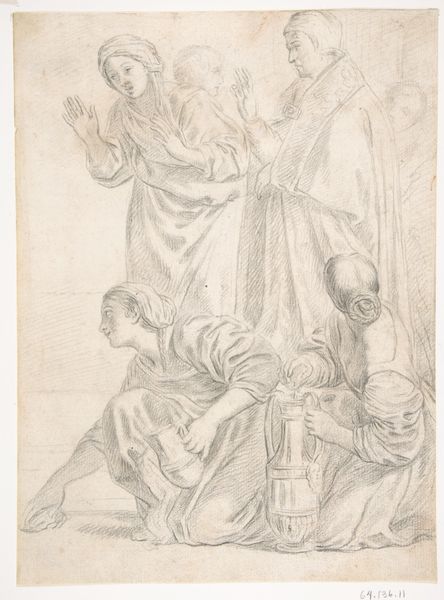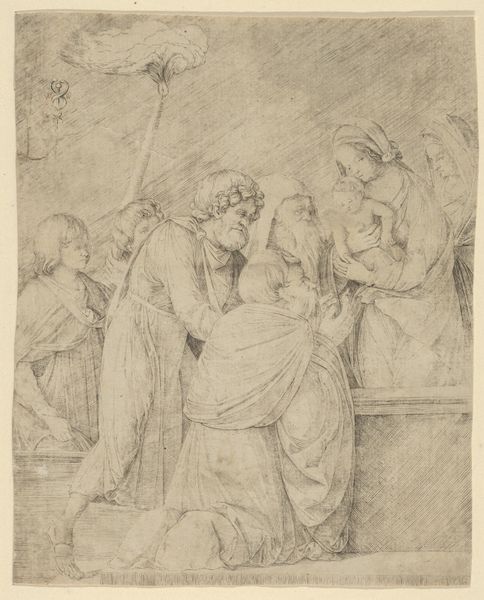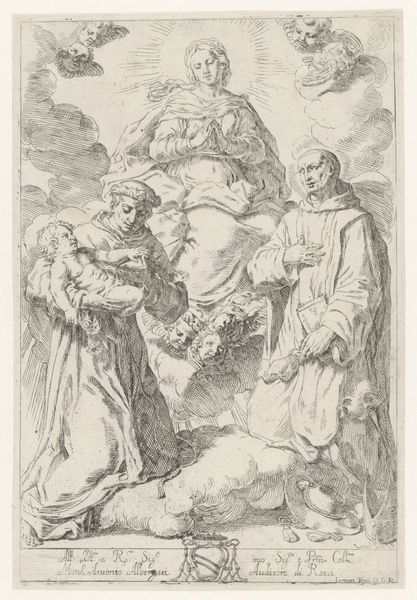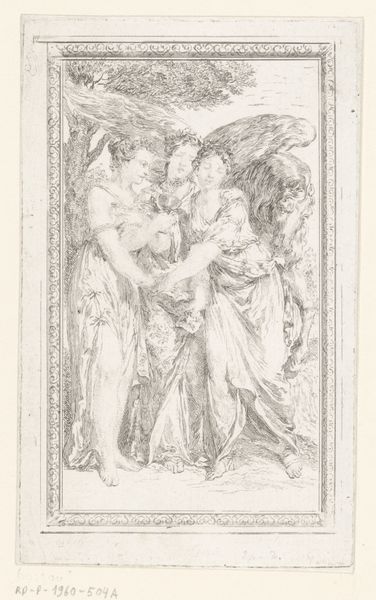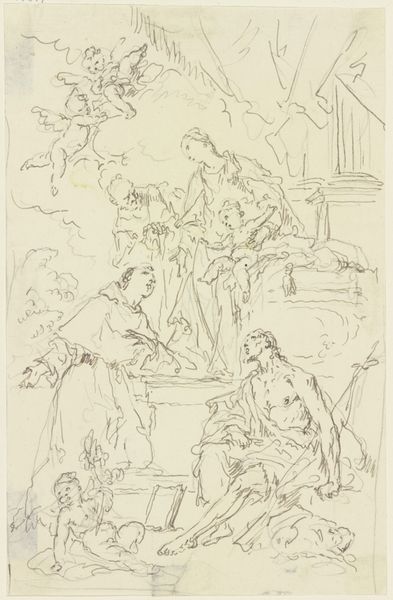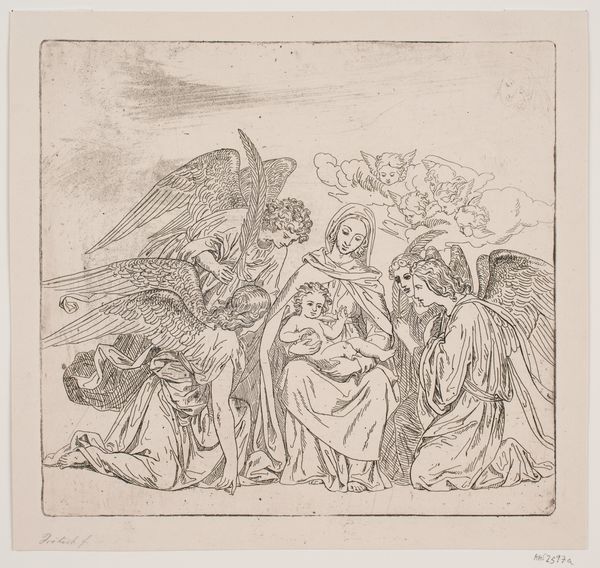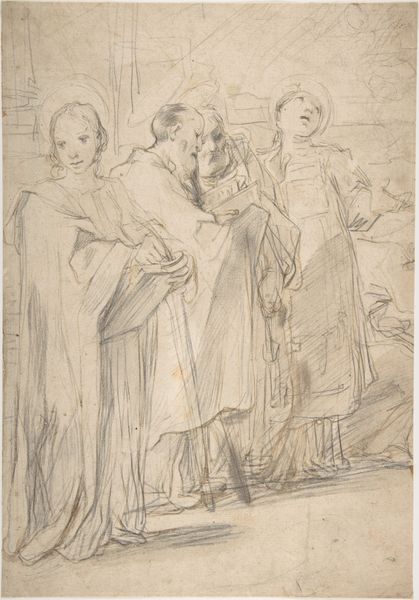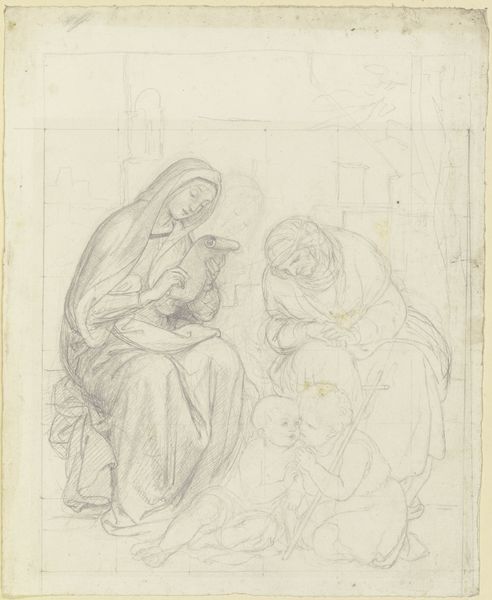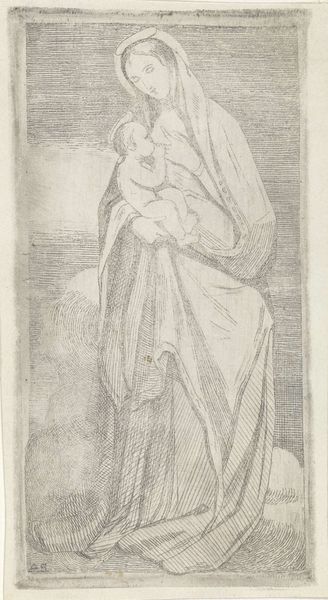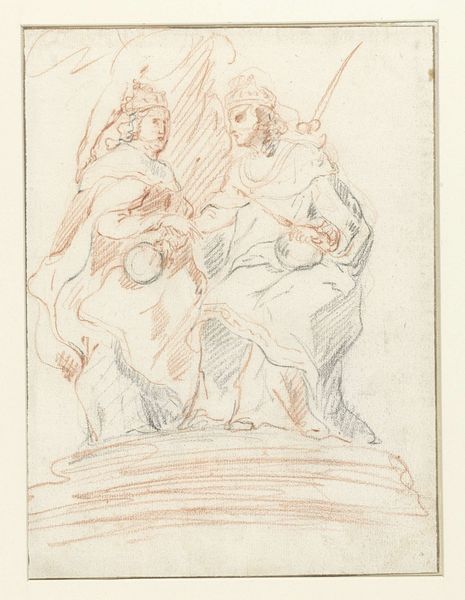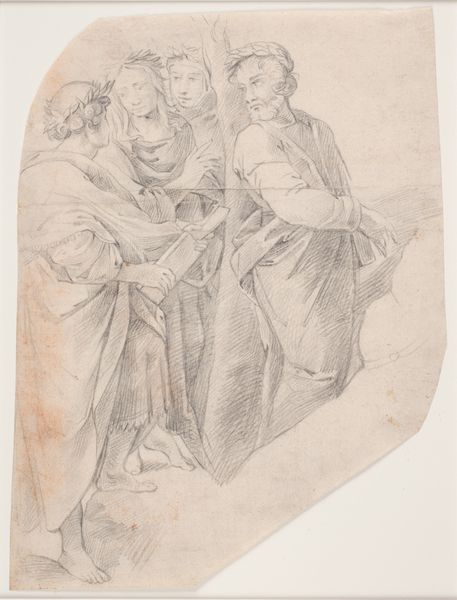
drawing, pencil
#
portrait
#
pencil drawn
#
drawing
#
pencil drawing
#
group-portraits
#
romanticism
#
pencil
#
history-painting
Copyright: Public Domain
Franz Pforr created this pencil drawing, "Raphael, Fra Angelico and Michelangelo on a Cloud over Rome," which now resides in the Städel Museum. The drawing presents three Renaissance masters elevated on clouds above Rome, creating a visually striking composition. Pforr's technique uses delicate lines and subtle shading, emphasizing the purity and idealism associated with these artists. The upward gaze of Raphael and Fra Angelico, contrasted with the seated, contemplative Michelangelo, suggests a visual hierarchy and differing approaches to artistic creation. This idealized grouping can be seen as a statement about the role of art and the artist in society, aligning with Romantic notions of artistic genius. It functions as a semiotic system where each artist represents specific values and aesthetic principles. Notice how the light, airy quality of the clouds juxtaposes with the detailed rendering of Rome below. This contrast establishes a dialogue between the earthly and the divine, framing the artists as transcendent figures overseeing the center of artistic and religious power. Through this formal arrangement, Pforr invites us to contemplate the legacy and enduring influence of these Renaissance giants.
Comments
stadelmuseum over 1 year ago
⋮
Franz Pforr has grouped a triumvirate of Italian Renaissance artists on a cumulus cloud like an image of saints. Making careful use of the finest hatching, he modelled their three-dimensional forms and thus retained the balanced clarity of his drawing. Composed like set pieces, the figures resemble immovable as statues. On the left is the youthful, confident Raphael; lost in pious meditation in the centre stands Fra Angelico; and the aged Michelangelo is shown seated, melancholy and immersed in reverie. As representatives of an artistic programme, they hover high above a view of Rome with its imposing architecture of the Vatican, St Peter's Basilica and the Castel Sant'Angelo.Pforr rejected the doctrines of the academy and in 1809 the young artist became one of the co-founders of the "Brotherhood of St Luke" in Vienna. In the spring of 1810 the "Brothers" set off for Italy and travelled in the footsteps of Dürer via Venice to Rome, where they lived as a community in the cells of the former monastery of San Isidoro. At the Vatican they were able to admire the frescos by the three artists portrayed here. Pforr will also have visited the only Gothic church in Rome, Santa Maria sopra Minerva. Here, he saw Michelangelo's marble statue of the 'Risen Christ' with the Cross (1521) and also the tombstone of Fra Angelico, whose likeness of the painter largely served as a model for the figure shown here. Raphael's face, by contrast, was based on a copper engraving in the 'Herzensergießungen eines kunstliebenden Klosterbruders' (1797). This programmatic text by W.H. Wackenroder had a considerable influence on the ideas of the Nazarene art movement. Directed towards German art of the time, it demanded sensitivity and new religious experience. The text also evinced a great reverence for Dürer, which Pforr shared to a high degree, described the longing for Italy and collected descriptions of the lives of famous Italian artists.Pforr's pencil drawing is outstanding both in style and content and can be seen as a vivid expression of will and the hope that a new art could be created by fusing German and Italian traditions. After the artist's early death the work passed into the ownership of Johann David Passavant, a friend of Pforr's since youth. Having trained as a painter, Passavant lived in the circle of the Nazarenes in Rome between 1817 and 1824. The historian and art scholar was appointed inspector of the Städelsches Kunstinstitut in 1840. In his will he bequeathed an unparalleled collection of drawings by Franz Pforr to the museum.
Join the conversation
Join millions of artists and users on Artera today and experience the ultimate creative platform.
